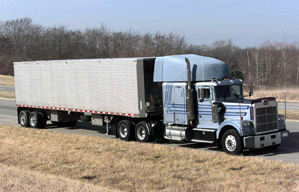Atomord. / Søren Hein Rasmussen. Sprogmuseet, 5. maj 2011 - http://sprogmuseet.dk/ord/atomord/
SIPRI Yearbook 2019
Modernization of world nuclear forces continues despite overall
decrease in number of warheads: New SIPRI Yearbook out now
(Stockholm, 17 June 2019) The Stockholm International Peace
Research Institute (SIPRI) today launches the findings of SIPRI
Yearbook 2019, which assesses the current state of armaments,
disarmament and international security.
At the start of 2019, nine states—the United States, Russia,
the United Kingdom, France, China, India, Pakistan, Israel and the
Democratic People’s Republic of Korea (North
Korea)—possessed approximately 13 865 nuclear weapons. This
marked a decrease from the approximately 14 465 nuclear weapons
that SIPRI estimated these states possessed at the beginning of
2018).
Of these 13 865 nuclear weapons, 3 750 are deployed with
operational forces and nearly 2 000 of these are kept in a state of
high operational alert.
First use of Nuclear Weapons: Preserving Responsible Control: Hearings before the Subcommittee on International Security and Scientific Affairs of the Committee on International Relations, House of Representatives, Ninety-fourth Congress, second session ... March 16, 18, 23, and 25, 1976. - Washington D.C. : U.S. Gov. Print. Off. in Komm., 1976. - 246 s.
Jungk, Robert: Stærkere end tusinde sole :
Atomforskernes skæbne.
- København : Jespersen og Pio, [1957]. - 309 s.
Moret, Leuren : Moret, Leuren: Nuclear Weapons Stealth Takeover : 5 Admirals, U.C. Regents, Carlyle Group, and Rand.
Nuclear Warships and Naval Nuclear Weapons : A Complete
Inventory / Joshua Handler ; William M. Arkin.
- Washington : Greenpeace ; Institute for Policy Studies, 1988. -
95 s. ; Neptun papers; 2).
Nuclear Weapons - Country Comparisons. / : Claire Mills ;
Jon Lunn.
The House of Commons Library, 2016.
-
http://researchbriefings.files.parliament.uk/documents/CBP-7566/CBP-7566.pdf
Natural Resources Defence Council, Inc.: Nuclear Weapons Databook Vol. 1: U.S. Nuclear Forces and Capabilities / Thomas B. Cochran ; William M. Arkin Milton M Hoenig. - Cambridge Mass. : Ballinger, 1984. - 340 s. : ill. - ISBN 0-88410-173-8
Nuclear Weapons, What You Need to Know. / : Jeremy
Bernstein.
Cambridge University Press, 2008.
-
https://archive.org/details/Nuclear_Weapons_What_You_Need_to_Know_by_Jeremy_Bernstein
Nuclear Wastelands : A global guide to nuclear weapons production and its health and environmental effects / by a special commission of International Psysicians for the Prevention of Nuclear War and the Institute for Energy and Environmental Research ; edited by Arjun Makhijiani, Howars Hu and Katherine Yih. - Cambridge ; London : The MIT Press, 1995. - 666 s. : ill. - ISBN 0-262-13307-5
Recovery and Recycling of Aluminum, Copper, and Precious
Metals from Dismantled Weapon Components / J. D. Lutz and W.T.
Wheelis. , 1995. - 20 s.
-
http://www.osti.gov/bridge/servlets/purl/25039-GHRlGt/webviewable/25039.pdf
'In general, the ongoing dismantlement of nuclear weapon hardware
represents a material stream totaling some 100 to 300 tons of
material per year for 10 to 15 years, exclusive of the "physics
package" and the aeroshell. This material stream is roughly 30%
aluminum, 10% copper, 10% ferrous, 1% precious metals, 25% other
metals and inorganics, and 25% organics.'
Reducing Alert Rates of Nuclear Weapons. / : Hans M.
Kristensen ; Matthew McKinzie.
UNIDIR. United Nations Institute for Disarmament Research. Geneva,
Switzerland, 2012.
-
http://www.unidir.org/files/publications/pdfs/reducing-alert-rates-of-nuclear-weapons-400.pdf
Still assuring
destruction forever: An update to the 2012 report Assuring
destruction forever: Nuclear weapon modernization around the world.
/ : Edited by Ray Acheson et al. 
- New York: Reaching Critical Will of the Women’s
International League for Peace and Freedom, 2013.
U.S. Nuclear Weapons Research, Development, Testing, and
Production, and Naval Nuclear Propulsion Facilities.
Compiled by Stephen I. Schwartz
Director, U.S. Nuclear Weapons Cost Study Project.
http://www.brook.edu/fp/projects/nucwcost/sites.htm
Zahle, Henrik: Den yderste beslutning : Eller hvem har ret til at beordre anvendelse af atomvåben? I: Ret mod atomvåben. Akademisk forlag, 1984 s. 56-61.
Protester mod atomvåben
Avery, John: The Overlooked
Threat of Nuclear Weapons.
Chomsky, Noam: Nuclear Weapons and Unchecked Climate Change Are
Leading Us Toward Doomsday, Talk, 18 March 2015.
- https://www.youtube.com/watch?v=w8GSalDF71c
Wittner, Lawrence S.: The Struggle Against the Bomb.
- Cambridge : Cambridge University Press ; Stanford Nuclear Age
Series.
The Struggle against the Bomb: One World or None: A History
of the World Nuclear Disarmament Movement through 1953. Volume 1.
Stanford Nuclear Age Series. Stanford: Stanford University Press,
1993. vii + 456 pp. Photographs, notes, bibliography, index. $75.00
(cloth), ISBN 0-8047-2141-6; $29.95 (paper), ISBN
0-8047-2528-4.
The Struggle against the Bomb: Resisting the Bomb: A History
of the World Nuclear Disarmament Movement, 1954-1970. Volume 2.
Stanford Nuclear Age Series. Stanford: Stanford University Press,
1997. vii + 641 pp. Photographs, notes, bibliography, index. $80.00
(cloth), ISBN 0-8047-2918-2; $32.95 (paper), ISBN
0-8047-3169-1.
The Struggle against the Bomb: Toward Nuclear Abolition: A
History of the World Nuclear Disarmament, 1971 to the Present.
Volume 3. Stanford Nuclear Age Series. Stanford: Stanford
University Press, 2003. vii + 657 pp. Photographs, notes,
bibliography, index. $75.00 (cloth), ISBN 0-8047-4861-6; $32.95
(paper), ISBN 0-8047-4862-4.
